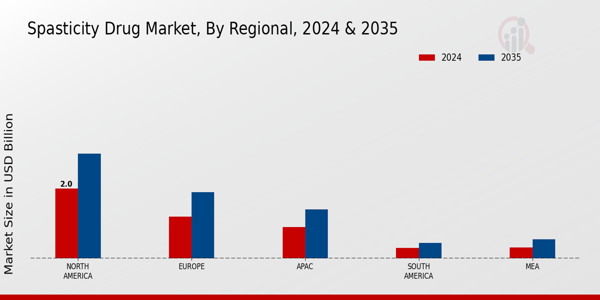Growing Geriatric Population
The increasing geriatric population is a critical driver for the Spasticity Drug Market. As individuals age, the prevalence of neurological disorders that cause spasticity, such as Parkinson's disease and stroke, tends to rise. This demographic shift is expected to result in a higher incidence of spasticity-related conditions, thereby driving demand for effective pharmacological interventions. According to demographic studies, the population aged 65 and older is projected to double by 2050, which could significantly impact the market dynamics. Consequently, pharmaceutical companies are likely to focus on developing targeted therapies for this age group, further propelling growth within the Spasticity Drug Market.
Evolving Regulatory Frameworks
Evolving regulatory frameworks are shaping the landscape of the Spasticity Drug Market. Regulatory bodies are increasingly recognizing the need for expedited approval processes for drugs targeting spasticity, particularly in light of the growing demand for effective treatments. This shift is likely to facilitate faster market entry for new therapies, thereby enhancing competition and driving innovation. Additionally, changes in reimbursement policies are expected to improve patient access to spasticity medications, further stimulating market growth. As regulatory environments adapt to the needs of patients and healthcare providers, the Spasticity Drug Market may witness a more dynamic and responsive marketplace.
Increasing Awareness of Spasticity Disorders
The rising awareness of spasticity disorders among healthcare professionals and patients is a notable driver in the Spasticity Drug Market. Educational initiatives and advocacy programs have been instrumental in highlighting the impact of conditions such as multiple sclerosis, cerebral palsy, and stroke on patients' quality of life. This heightened awareness is likely to lead to increased diagnosis rates and, consequently, a greater demand for effective treatment options. As more patients seek medical advice, the market for spasticity drugs is expected to expand, with estimates suggesting a compound annual growth rate of around 5% over the next few years. This trend indicates a growing recognition of the need for specialized therapies within the Spasticity Drug Market.
Increased Investment in Research and Development
Increased investment in research and development (R&D) is propelling advancements in the Spasticity Drug Market. Pharmaceutical companies are allocating substantial resources to discover novel compounds and improve existing therapies for spasticity management. This focus on R&D is driven by the need for more effective treatments that address the diverse needs of patients suffering from spasticity. Recent data indicates that R&D spending in the pharmaceutical sector has seen a steady increase, with many companies prioritizing neurological disorders. This trend suggests a promising future for the Spasticity Drug Market, as innovative therapies are likely to emerge, enhancing treatment options and improving patient outcomes.
Technological Innovations in Drug Delivery Systems
Technological advancements in drug delivery systems are transforming the Spasticity Drug Market. Innovations such as sustained-release formulations and targeted delivery mechanisms enhance the efficacy of spasticity medications while minimizing side effects. For instance, the development of intrathecal drug delivery systems allows for direct administration of medications to the spinal cord, potentially improving therapeutic outcomes for patients with severe spasticity. The market is witnessing a shift towards these advanced delivery methods, which could lead to increased patient adherence and satisfaction. As a result, the Spasticity Drug Market may experience a surge in demand for these innovative therapies, with projections indicating a significant uptick in market value over the coming years.


















Leave a Comment